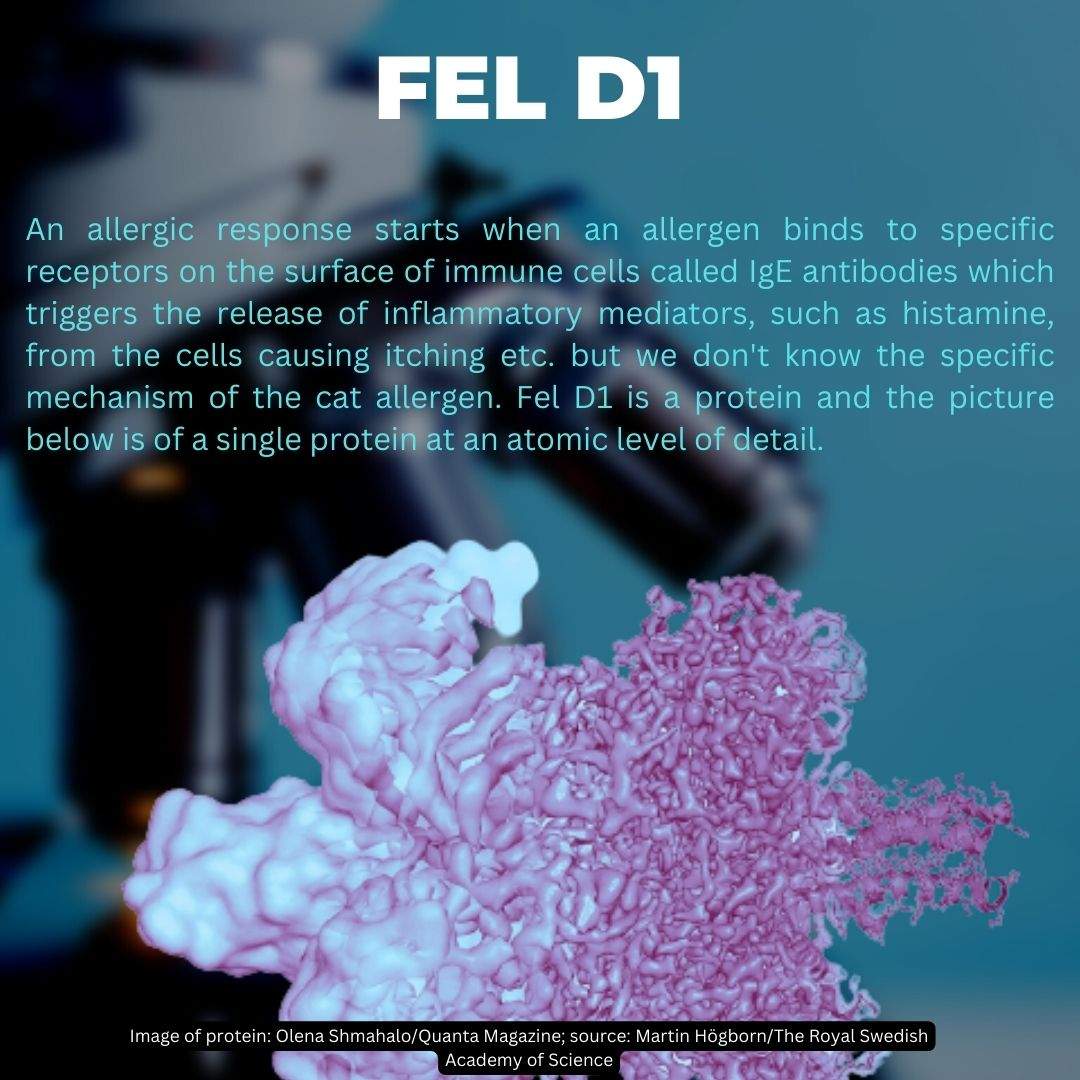We know that the cat allergen which is the cat’s saliva and which is also secreted by the sebaceous glands is a protein which scientists have called Fel D1. Proteins are incredible small objects. They are smaller than viruses but bigger than molecules and atoms. We know how unpleasant an allergic reaction to the cat allergen can be for the 10% of people who are allergic to cats.

On my careful research the current position is that we don’t understand the precise mechanism by which Fel D1 causes the allergic reaction. If you know better, please tell me. A 2013 study concluded:
“Fel d 1 can bind to the mannose receptor, but immune signaling is not initiated following engagement of this receptor. Thus, the mechanism by which this protein initiates an allergic response remains unclear (AUGUST 15 2013).”
In general terms the following explains how an allergic reaction is started:
“An allergic response is initiated when an allergen, such as a protein, binds to specific receptors on the surface of immune cells called IgE antibodies. This binding triggers the release of inflammatory mediators, such as histamine, from the cells, leading to symptoms such as itching, swelling, and difficulty breathing. This is known as the “IgE-mediated” allergic response.”
I guess if we knew we would have found a better way of stopping the allergic reaction than the 47% success rate of Purina LIVECLEAR dry cat food which contains a key protein sourced from eggs that contains an anti Fel d 1 antibody.
I am afraid there is nothing more to say as the answer to the question is basically: “We don’t know specifically”.
Below are some articles on Fel D1.

